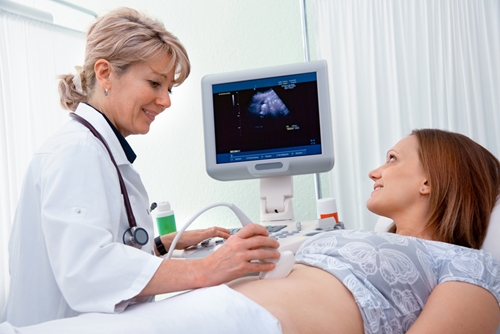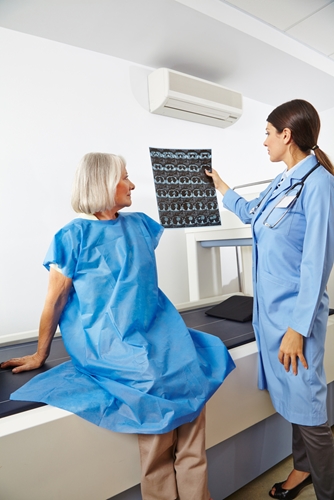Radiation is part of diagnostic imaging exams, which may cause some people to worry about exposure. However, while the benefits outweigh the risks, patients may still be wary of the amount of radiation they are receiving. They believe that too much exposure increases their chances of developing cancer. While the risk exists, it is low with the dosage people generally receive. New research may also help allay the fears of a specific group of patients: pregnant women.
Radiation doses safe for pregnant women
Unborn babies are vulnerable to many outside threats, including air pollution, germs, stress and diet. Even medical procedures, such as digital imaging, have been thought to cause miscarriages and deformities. However, when proper precautions are taken, pregnant women can receive diagnostic radiology.
In a study published in the Journal of the American Academy of Orthopaedic Surgeons, researchers from Thomas Jefferson University and the Garden State Obstetrical and Gynecological Associates discovered that many imaging tests are safe for women and their fetuses. The radiation dosages are generally safe when scans are performed using precautions. Amounts below 100 milligrays do not pose high risks. If women are exposed to more than 100 mGy, their fetuses may experience uterine implantation, miscarriage, mental retardation and stunted growth. However, to surpass that amount, patients would need to receive multiple tests.
According to the Health Physics Society, a digital X-ray can expose a person to 0.01 to 1.2 millisieverts depending on the test. A CT scan require dosages of less than 10 mSv. Pelvic CTs can expose patients to up to 35 mSv of radiation, but that is well under the maximum 100 mGy.
Different methods lessen risks
Diagnostic imaging can be done at any time during pregnancy, as the benefits usually exceed the risks. However, there are certain precautions that radiologists and technicians should take to reduce the exposure to fetuses. According to the American Congress of Obstetricians and Gynecologists, unborn babies face the greatest threat of mental retardation and central nervous system damage from radiation between eight and 15 weeks. If possible, tests should be delayed until after this time period or after the birth of the baby.
Other medical imaging tests, such as MRIs and ultrasounds, are recommended in place of ones using ionized radiation. There has been no evidence of negative effects from these scans, which makes them safe for both maternal and fetal examinations, the ACOG explained. Contrast agents should be avoided during tests unless necessary for diagnosis. They are associated with neonatal hypothyroidism and will have higher doses of radiation.
Pregnant women should be properly protected during all radiological exams, and tests should be kept at a minimum. Multiple scans increase the amount of radiation both the mother and fetus are exposed to.
Precautions should be taken to ensure the safety of pregnant women during diagnostic imaging. However, these exams should not expose either the mother or the baby to dangerous doses of radiation.
Contact Viztek for more information.
Ronny Bachrach
Latest posts by Ronny Bachrach (see all)
- Konica Minolta Debuts First-of-Its-Kind Digital U-Arm System at AHRA - July 27, 2016
- Researchers Detect Signs Of Stroke Risk Using MRI - June 27, 2016
- Imaging Biz: Q&A with David S. Channin MD: How to Make PACS Patient Centered - June 22, 2016










